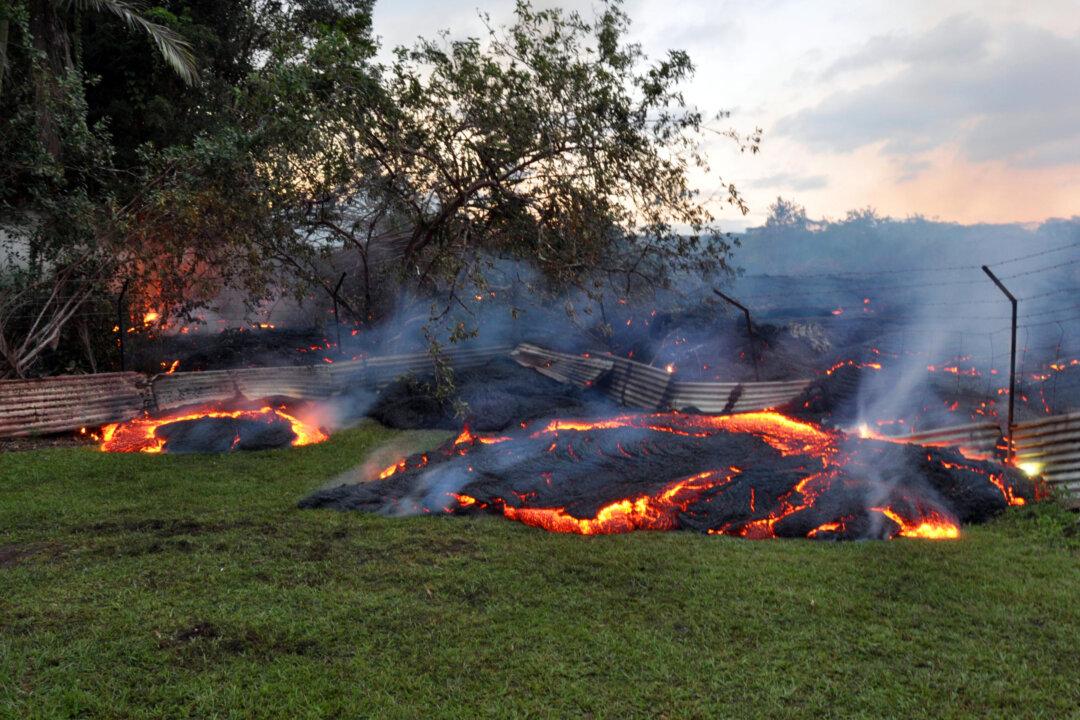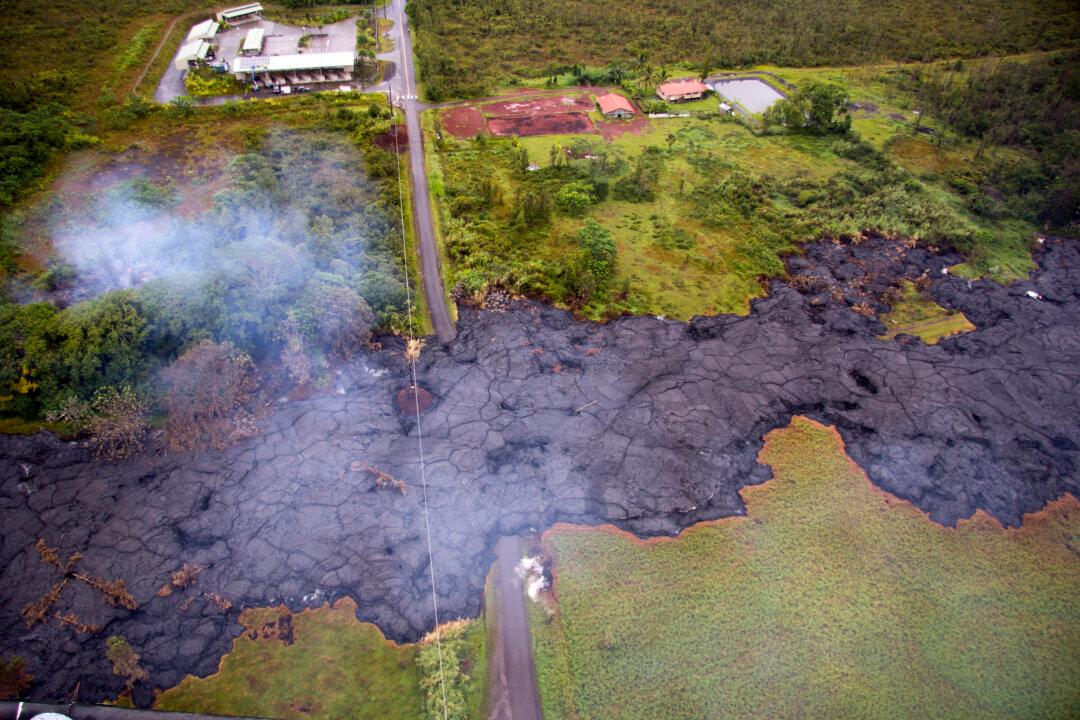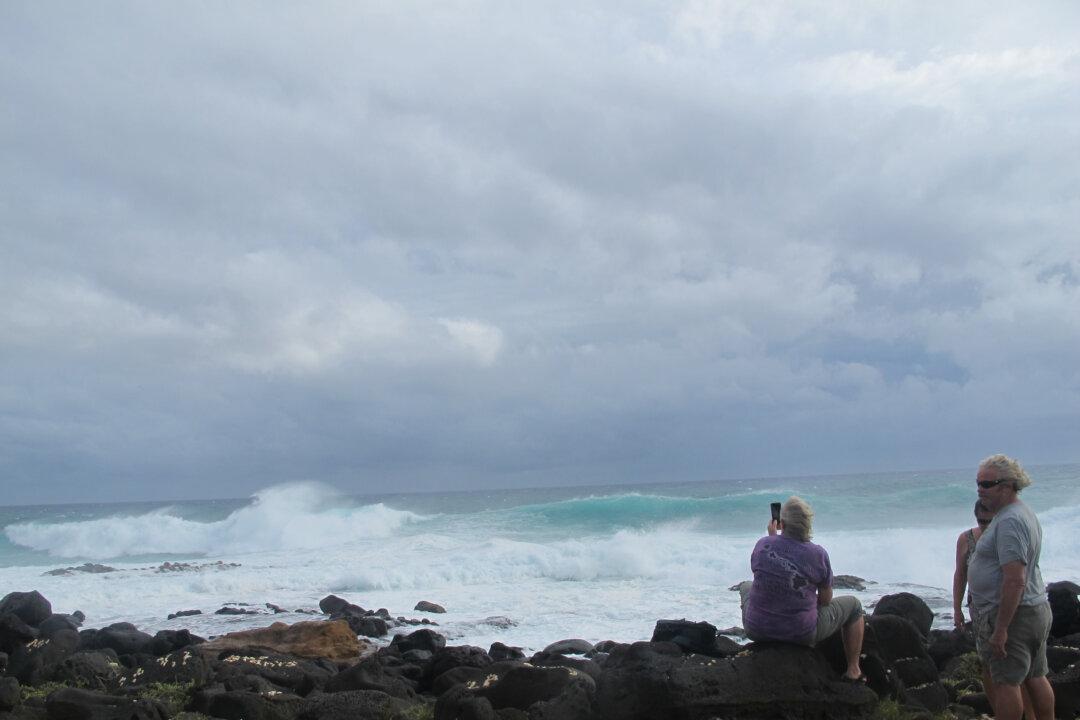[aolvideo src=“http://pshared.5min.com/Scripts/PlayerSeed.js?sid=1759&width=480&height=300&playList=518487358&responsive=false”]
PAHOA, Hawaii—Lava that’s slowly creeping into a rural Hawaii town is about the length of a basketball court from a house.
The molten stream so far has burned a shed, some tires and vegetation — but no homes.
Hawaii County Civil Defense Director Darryl Oliveira said Wednesday the lava is about 100 feet from a Pahoa residence. The couple who lives there has left.
Meanwhile, scientists from the Hawaiian Volcano Observatory report the flow’s leading edge is 240 yards from Pahoa Village Road, which leads through downtown.
Dozens of homes, business and other structures are in the area of the flow’s path. That amount could increase as the flow front widens.
The front was about 25 to 30 yards wide early Wednesday. It later widened to 40 to 50 yards.
Questions and Answers About Hawaii Lava Flow
Lava that has entered a rural Hawaii town has been described as a disaster in slow motion. After months of creeping through uninhabited areas of the Big Island, it reached Pahoa this week, crossing a residential street, burning down a garden shed and inching toward homes and a main road that goes through downtown.
The lava is from Kilauea, one of the most active volcanos in the world. It has been actively erupting since 1983.
HOW PREDICTABLE IS ITS PATH?
Scientists from the U.S. Geological Survey’s Hawaiian Volcano Observatory have the tools to monitor active volcanos to determine if an eruption is imminent and forecast the path of a lava flow.
But lava is still a natural phenomenon, and much like a hurricane, some uncertainty remains.
The Big Island’s topography contributes to deviations in the lava’s route, said volcanologist Loyc Vanderkluysen, as assistant professor at Drexel University in Philadelphia who earned a doctorate degree from the University of Hawaii.
The lava emerged from a vent in June. It started moving through thick vegetation that made it difficult at times to see deviations in topography, he said.
But it’s looking like the lava is headed to Pahoa Village Road, which runs through downtown.
“Laterally it might be a little to the right or left, but it will head to the road” — unless it suddenly stops moving, Vanderkluysen said.
What’s less predictable is where a new branch will sprout from the miles-long flow and spread in other directions.
“We don’t have a good grasp of where breakouts are going to happen,” he said.
HOW HOT IS THE LAVA?
About 2,100 degrees Fahrenheit, according to Janet Babb, spokeswoman for the Hawaiian Volcano Observatory. “Ten times hotter than boiling water.”
But the temperature starts to drop after the lava is exposed to air.
“The crust cools down, and you can walk on it after a few days,” Vanderkluysen said.
CAN ANYTHING BE DONE TO STOP IT?
“Lava diversion is a very complex issue,” Babb said. “It’s a complex legal, political, technical and cultural issue.”
Residents have expressed anger at suggestions to divert the Kilauea flow, saying it’s culturally insensitive to interfere with the will of Pele, the Hawaiian volcano goddess.
Attempts were made to stop flows from Italy’s Mount Etna by building trenches and concrete walls. But that was only partially successful.
Such efforts also are extremely expensive, noted Vanderkluysen.
From The Associated Press


